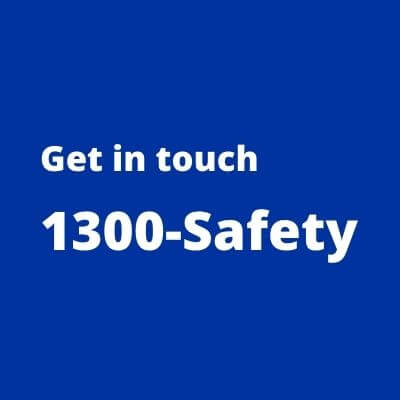Home » Occupational Hygiene » Lead Contamination Testing
Lead Contamination & Testing
Exposure to respirable or ingestible lead particles represents a risk of lead poisoning. In adults lead exposure increases not only the risk of heart diseases and stroke, symptom such as reduced sensation, irritability or aggressive behaviour represent a high risk at the workplace.
The main source of lead poising is working with lead-containing compounds such as lead paint, pipes and plumbing material, batteries, or during the manufacturing of certain retail products (e.g., cosmetics).
Contact us to arrange a risk assessment for lead contamination in your workplace.
Our services include:
Our experts conduct a first visual review to evaluate the risk of taking samples.
If declared safe, our qualified and experienced Occupational Hygienist will take samples of the potentially lead containing material.
Lab analysis of samples taken during the assessment will be analysed in a specialised NATA accredited laboratory
Request a Quote
Please provide us with some details.

Lead Contamination & Lead Testing
HSE Australia conducts sampling of potentially contaminated or lead-containing surfaces or materials, such as in areas surrounding remediation works where lead particles may settle, or of painted surfaces as well as air monitoring and sample analysis. Our FitTick team also conducts respirator fit testing for workers involved in remediation projects or manufacture processes where lead particulates and vapours are present, to ensure that a correct fit and seal is being achieved.
Lead Paint
Lead paint, being one of the main sources of potential exposure, can be especially dangerous because of the high percentage of lead that was added to paint as lead containing pigments. Until the mid-20th century, lead paint consisted of up to 50% lead chromate (yellow paint), lead oxide (red paint) or lead carbonate (white paint). Lead paint or lead-based paint was used for a variety of applications from window and wall paint to automotive paint, or the coating of large-scale machinery or structures such as cranes and bridges.
When does Lead become a health risk?
Lead becomes a health risk when it is inhaled either as a particulate, fume, or vapour – or ingested through cross contamination onto foods. Common reasons why lead particles become airborne are mechanical work processes that generate lead-containing dust like sanding down old lead paint or sandblasting large machinery such as cranes, military equipment or steel structures. However, workers in lead-associated industries such as smelting, or battery manufacturing are generally considered to have a higher risk of exposure to lead through thermally generated lead fumes or chemically generated lead vapours.
When should an Occupational Hygienist be involved?
Because of the wide range of applications, the long-term usage of lead-based products and the high proportion of lead in many products, for any work that would result in a disturbance of the product, it is recommended to conduct sample testing upfront and air monitoring during the work to determine the potential risk for workers and to implement controls that minimises the risk of exposure.
HSE Australia’s Lead Testing Services
HSE Australia conducts sampling of potentially contaminated or lead-containing surfaces or materials, such as in areas surrounding remediation works where lead particles may settle, or of painted surfaces as well as air monitoring and sample analysis. Our FitTick team also conducts respirator fit testing for workers involved in remediation projects or manufacture processes where lead particulates and vapours are present, to ensure that a correct fit and seal is being achieved.
Assessment, Sampling & Analysis of potentially Lead Contaminated Material.
HSE Australia offers a wide range of Occupation Hygiene and Risk Management Services in the area of Lead Contamination. Get in touch for an individual quote.
Request a call back
Solving problems others find difficult...for clients in

Frequently asked Questions
Health Safety Environment Australia
What is Lead Paint or lead-based paint?
Lead-based paint is a paint that was largely composed of lead-containing pigments such as lead chromate, lead oxide or lead carbonate to produce yellow, red or white paint colours respectively. Lead-based paint was used until the 1960’s and contained up to 50% lead, until the Australian Uniform Paint Standard was changed, reducing the allowable amount of lead in paint to 1%, and twice again in the 1990’s to 0.25% and 0.1%.
Where was lead-based paint used?
Lead-based paint was used on a multitude of applications from wall-paint or window-paint to the coating of large scale-machinery such as cranes, conveyors, trucks, military equipment or civil structures such as steel bridges or electrical towers.
Where else is lead found?
Lead can also be found in soil contaminated through past exposure to lead containing products, for example spilled lead containing petrol or from industrial sources like a nearby smelter. Lead contaminated soil is particularly a problem when the contamination occurs in high traffic areas such as school yards, playgrounds, parks or garden areas. Lead can also be present in some hobby activities such as the use of lead solder in electrical or stained-glass work or weights used to sink lines when fishing.
How does lead poisoning occur?
Lead poisoning usually occurs after inhaling or ingesting lead particles, fumes or vapours over a prolonged timeframe. Organic lead has also been found to enter a worker’s body through absorption via the skin.
What is considered a high exposure to lead?
Lead exposure levels can be determined through air monitoring, where Safe Work Australia has set workplace exposure standards for inorganic lead dusts and fumes as an eight-hour time weighted average (TWA) of 0.05 mg/m3. The degree of exposure to lead can be detected via a blood test. A blood lead level of greater than or equal to 10 μg/dL for females of reproductive capacity, or greater than or equal to 30 μg/dL for females not of reproductive capacity and males signifies a high exposure, and is the threshold set by Safe Work Australia for removal of a worker from lead risk work.
Where can I be exposed to Lead?
In most areas where lead was and is used the chances of exposure are relatively low. For example, intact lead paint or lead sheeting in a laboratory, do not represent an immediate risk because the chances of inhalation or ingestion are low while the lead containing material remains undisturbed, and are otherwise controlled through contact. However, lead exposure becomes a health risk when lead becomes airborne and can be inhaled, such as through work that is generating lead-containing dust (sanding or sandblasting) or lead-containing fume or vapour (smelting and manufacturing). Ingestion of lead through contact with lead products, or through contact with surfaces where airborne lead has settled such as on tools or work clothing, can also be a route of exposure if thorough hygiene practices are not adhered to.
Is lead still a problem and allowed in Australia?
In Australia, the amount of lead allowed as an additive to paint has been reduced to a minimum since the 1960s. Lead additives were banned altogether in 2010. However, lead-based paint still represents a common and ongoing problem, as the wall or window paint of older properties (1920-1970) can contain up to 50% lead. Therefore, lead exposure can occur when re-developing, refurbishing, or demolishing older property. Exposure in other areas where lead is still used, such as radiation protection, does not usually represent a health risk.
What can I do to not get exposed?
To reduce the risk of lead exposure, a thorough lead risk assessment should be conducted before a potentially lead-containing product or area is touched. The lead risk assessment process includes taking samples of potentially lead-containing material and the analysis in a specialised NATA accredited laboratory to determine the level of contamination. Workers who are exposed to potentially lead-containing airborne material must wear adequate Personal Protective Equipment (PPE) such as Respirators and Disposable Coveralls.
Where can I find further information about Lead exposure at work?
For further information regarding exposure to lead at the workplace we recommend visiting your States or Territory’s Safework website or state health website, or from Safework Australia.
https://www.safework.nsw.gov.au/hazards-a-z/hazardous-chemical/lead-work
https://www.sahealth.sa.gov.au/wps/wcm/connect/d43c4d8048f12740888aef0e3d7ae4ad/Fact%2BSheet%2B-%2BLead-based%2Bpaint+UPDATED+011021.pdf?
One Source Many Solutions
Over the past 15 years we developed the ability to quickly understand and respond to our clients’ needs. We are “solving problems others find difficult…”.
We offer our clients an enviable team of specialists working with associates and other external experts, driving and delivering fit for purpose, tailored single sourced solutions for you.








